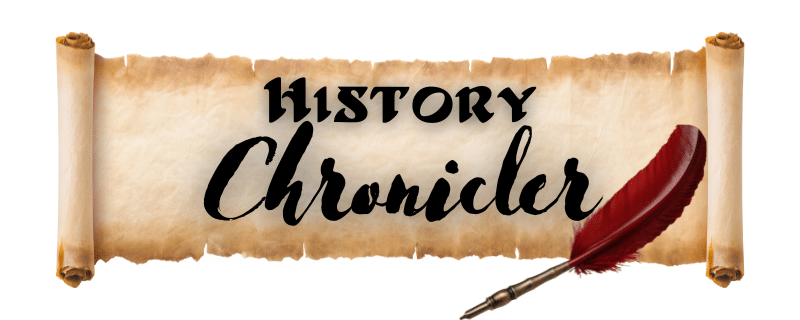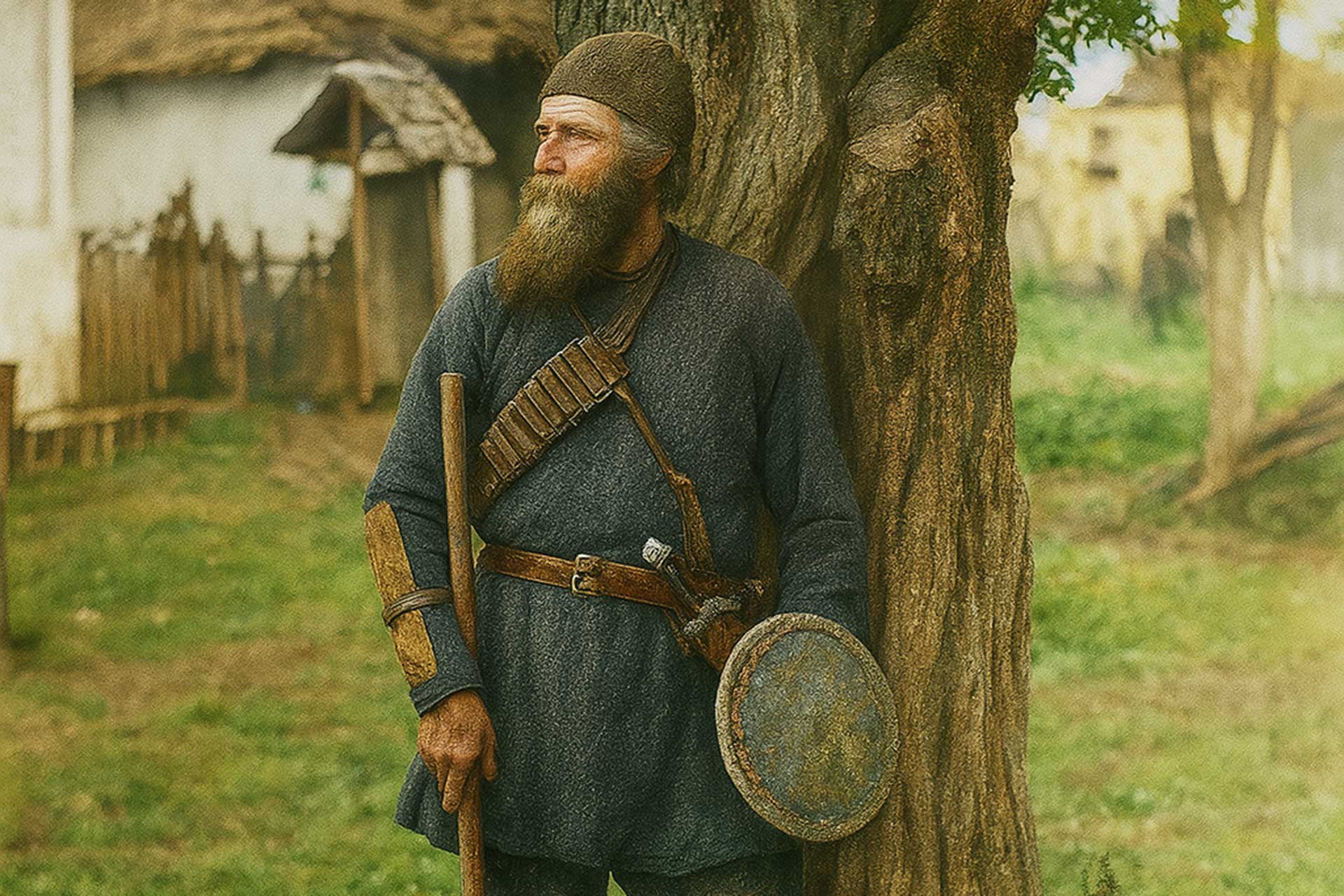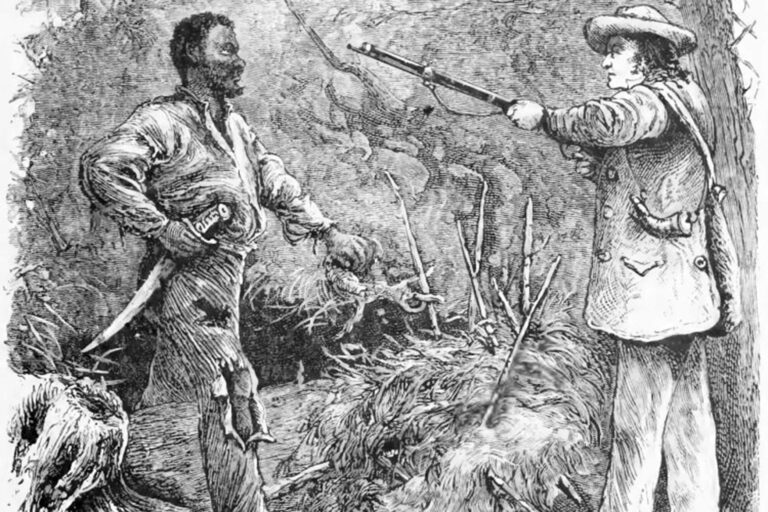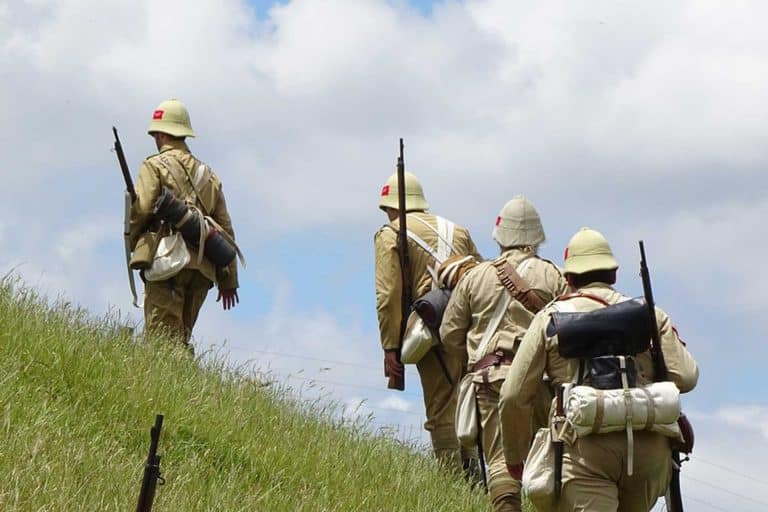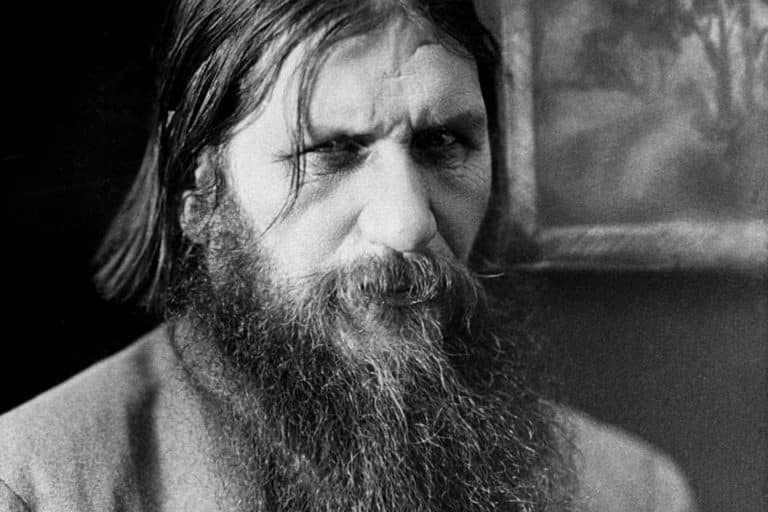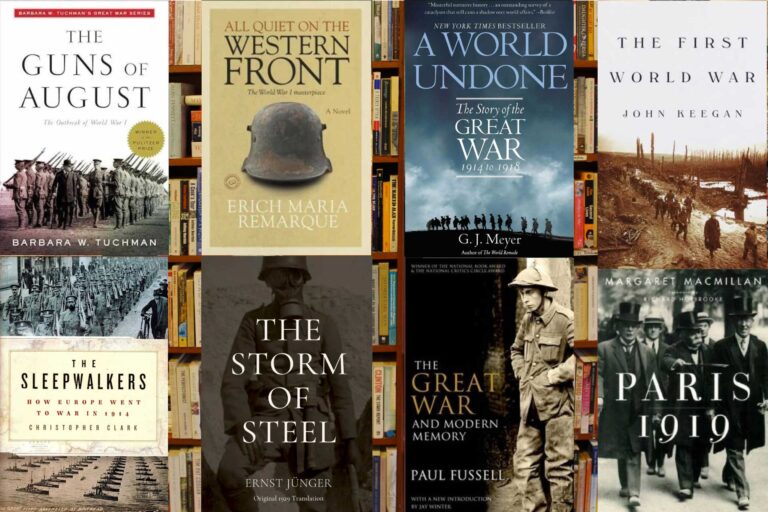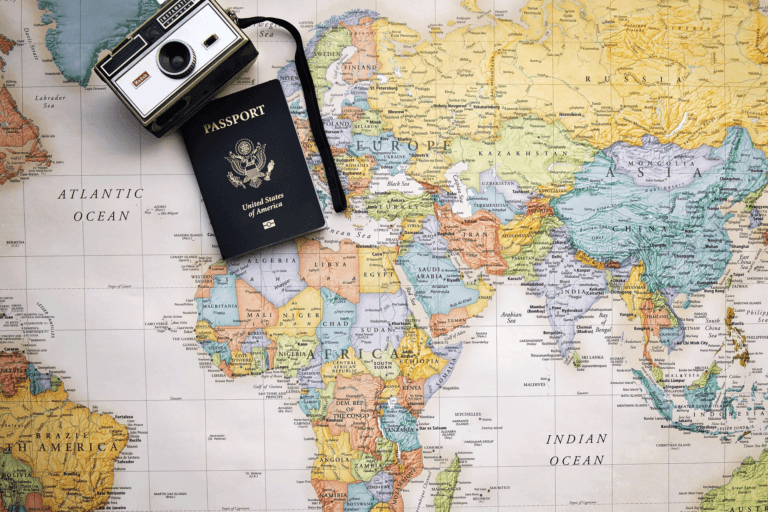The Khevsur Warriors of Georgia: Medieval Spirit in a Modern War
The Last Warriors of the Mountains
Deep in the folds of the Caucasus Mountains, in the remote highland region of Khevsureti, the Khevsurs maintained their age-old traditions of proud, fiercely independent mountain clans that had fought for centuries with sword and shield. Strict codes of honor and conduct passed down over centuries prepared Khevsur men for battle just as much as for herding and agriculture. Donning chainmail and wielding sabers, Khevsur men bound themselves to each other and their deities through blood oaths and ritual pledges. The relative isolation of these mountain clans helped to preserve traditions and practices that had long since disappeared in other parts of Europe, earning Khevsurs a reputation as medieval anachronisms on the eve of World War I.
Legends and tales told of Khevsur men storming off to war with swords at the ready and crosses sewn into their clothes. Medieval anachronisms, or holy warriors, Khevsurs fought, so the stories went, with the bloodlust of the crusaders, utterly unfazed by the terrors of modern battle. Not all of these legends survive close historical scrutiny. Still, one fact is undeniable: the Khevsurs brought an ancient world to the battlefields of modern industrial warfare, where chain mail and the rituals of medieval warfare met the gunpowder and industrial carnage of the 20th century.
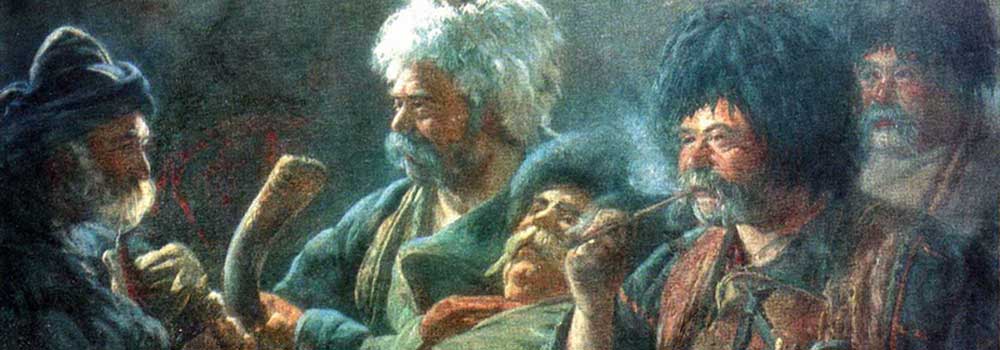
Who Were the Khevsurs?
The Khevsurs are an ethnic subgroup of Georgians who have historically resided in a remote mountainous area known as Khevsureti in the northeastern corner of Georgia. Nestled in the Greater Caucasus Mountains, this region was isolated from much of the world for centuries. As a result, ancient traditions and beliefs in Khevsureti were often stronger and more deeply-rooted than in other areas.
Living in remote highlands, the Khevsurs were fiercely independent, their life a constant struggle for survival. The rough terrain made self-sufficiency a necessity, and this, combined with their isolation, imbued them with a strong sense of communal loyalty and spiritual depth. For centuries, the Khevsurs knew that in order to survive in the mountains, one had to be ready to fight at a moment’s notice.
In more accessible areas of the Caucasus, modern weapons and Western-style clothing became the norm over time, but Khevsurs retained their medieval appearance until well into the 20th century. They wore long tunics, high leather boots, and a particular style of chokha – a wool coat that was fitted with bullet pouches.
Chain mail was often worn under or over the coat. In addition to serving as protection from bullets, it was worn as a badge of pride, even on peaceful outings. The curved-bladed Khevsur sword was highly prized, not only as a weapon, but as a family heirloom with great symbolic significance; the sword and its ornate hilt were usually blessed in church and given to a son by his father as a rite of passage.
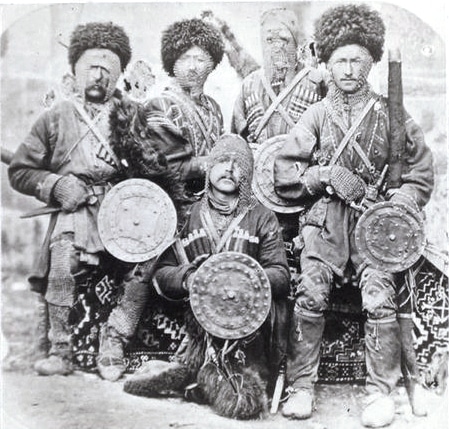
Above all else, the Khevsurs were proud. Honor was their way of life, and every man was expected to uphold a strict warrior code, which demanded unquestioning loyalty to the clan, fearlessness in battle, and the protection of the weak. Blood feuds were sometimes the result, as every insult to one’s honor had to be answered, and the combatants had to settle the score in person. At the same time, the Khevsurs had a close cultural relationship with war and martial arts. A good warrior was seen as a person of great dignity and moral virtue, and many men took pride in their combat skills.
Weapons were worn with an element of ceremony, even in times of peace. The Khevsur warrior would usually be equipped with a dagger, sword, and sometimes a small round shield.
The most obvious difference from a modern perspective was the profusion of Christian crosses that the Khevsurs had sewn into their clothes or etched onto their armor and blades. Many of the earliest ethnographers who visited the area in the early 20th century, such as Richard G. MacGillivray, were astounded by the discovery of “the last remnants of medieval knighthood” in the Caucasus – people wearing chain mail, iron helmets, and adorned with the symbol of Christ.
Khevsurs were Christians, but many of their customs had echoes of pre-Christian traditions and practices. Ancestor worship and animism were not uncommon. Certain groves of trees were also considered sacred, and specific rituals were performed before going to war. Songs were sung and epic poetry recited to celebrate heroic deeds and commemorate battles, defeats, and victories in war. In this way, combat became a part of the shared cultural history, a way for each generation to be connected to those who had fought before.
This relationship to combat, their spiritual worldview, and unyielding cultural pride set Khevsurs apart from other Georgians—and later from soldiers and peoples of the Great War. They were not just soldiers from the mountains. They were the mountains themselves, stepping into the modern world at a time of war, and they brought not only swords, but also a spirit like no other.
The Myth vs. Reality of Khevsurs in WWI
Few people visited or wrote about the Caucasus before, during, or after World War I without mentioning the tales of Khevsur warriors in their reports or travelogues. The Khevsurs were a source of particular interest to travelers because they were said to have “remained unchanged” since medieval times, preserving aspects of medieval culture, such as knighthood, feudalism, and Christianity, which they combined with pre-Christian beliefs and rituals.
Furthermore, when they rode out into battle in the first decade of the 20th century, Journalists and travelers reported that khevsurs dressed as knights, and their costumes and armor were laden with Christian crosses. It was even stated that Khevsurs thought they were descendants of the Templars who had lost their way and were rumoured to have finally settled in the Caucasus. Of course, a whole array of embellishments was added to these legends over time, forming romantic or outright false tales.
In these stories, Khevsurs are depicted as wearing full chain mail, wielding swords, and riding horses into modern warfare, dressed as Templar Knights. While the Khevsurs had managed to preserve many medieval elements in their clothing and arms, these were worn by those of fighting age and the head of a household as part of ceremonies and traditions, as well as for local militia or self-defense units, or for formal occasions such as weddings, funerals, and the like.
In peacetime, such garments and armor would have been worn in ceremonial or special settings, but the rigors of trench warfare in the first half of the 20th century would not have permitted it. Accounts of soldiers wearing heavy chain mail into WWI are generally not well documented, and in the case of the Khevsurs, seem to be an embellishment of the perceived medieval nature of their dress and culture.
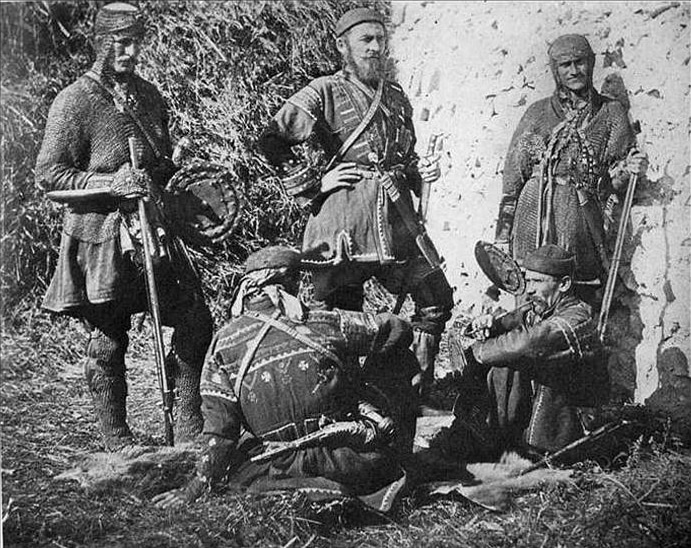
In fact, the number of Khevsurs that may have participated in the fighting on any front during WWI is challenging to ascertain, since their population in the mountains of Khevsureti would have constituted a minuscule percentage of the Georgian or Russian Imperial forces in total. However, it is stated in Khevsureti’s oral history that men did fight in the Great War, sometimes choosing to fight in defense of the homeland, but other times joining the fight in response to the calls of the Russian Imperial or Georgian state.
Tales of the Khevsurs’ involvement in the war generally emphasize their pride and courage, and the fact that the Khevsurs could bring a unique flair to the modern battlefield, if only for a short time or in a symbolic capacity.
Accounts of Khevsurs fighting in WWI are more often found in oral than in written history. However, Russian military officials occasionally described the Khevsurs in their documentation of the Caucasus, frequently remarking that they appeared “archaic but noble.” Accounts in military reports or observations of the Khevsurs are generally short, noting their “particular” appearance. While most soldiers in WWI trenches were Khevsurs did not enter battle in armor or numbers, the Khevsurs present in the First World War and their perceived archaic nature would add a mystique that contributed to rumors and the increase in travel to the Caucasus, and thus the romantic myth of the “last knights of the Caucasus.”
Khevsurs in the Russian Imperial Army
Though few in number, Khevsurs who took up the uniform did so through a combination of voluntary recruitment and localized conscription. This process introduced a distinct cultural element into the imperial forces, one deeply influenced by the regional history of clan solidarity and martial expectation.
At the front, especially in the Caucasus, the Khevsurs had to adjust to the realities of industrial warfare. Accustomed as they were to dynamic and hit-and-run tactics in mountainous terrain, they were now faced with the requirement to maintain position in the harsh environment of trenches and artillery barrages. Adapting to this new form of violence was not always easy. Still, their natural endurance and experience with extreme weather and high-altitude conditions did often lend them a particular advantage in mountain warfare. They were usually found to be useful on patrols or in operations in rugged terrain where regular units might struggle.
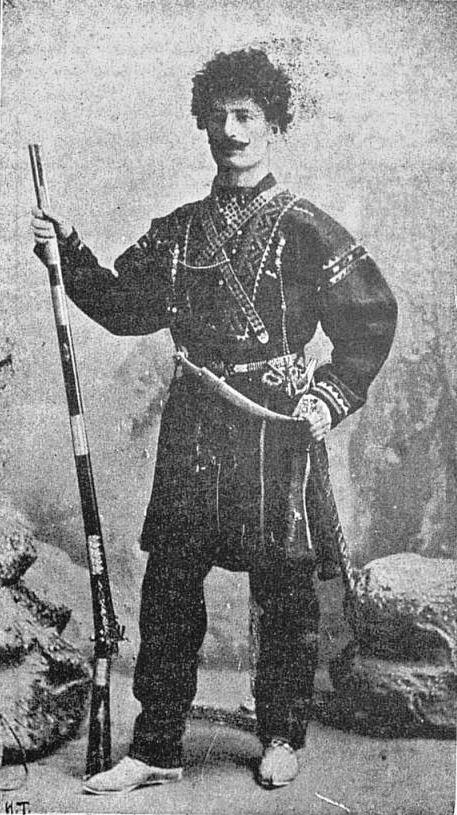
In terms of tactics, the Khevsurs contributed an innate understanding of terrain and mobility. Translating this into the formal structures and commands of the Russian military was sometimes challenging, but when deployed in a manner that allowed for a degree of flexibility, their skills were utilized effectively. A Russian staff report from the Caucasus in 1916 notes that specific highlander units were “exceptionally useful for mountain reconnaissance and raiding parties”. These units, the report notes, would almost certainly have included Khevsurs from Khevsureti and other highland districts in the area. In such capacities, the Khevsurs found a role in the huge machinery of the imperial war.
The relationships between the Khevsurs and their fellow Russian and foreign soldiers were, of course, complex and varied. On the one hand, there was a certain degree of fascination with the Khevsurs’ exotic appearance, still influenced by their traditional dress, and the strict code of honor they adhered to.
On the other hand, there was also suspicion and distance due to language and cultural differences. In many cases, the bonds formed through shared hardship on the front lines helped overcome such barriers. Khevsur soldiers were known for their calm demeanor in the face of danger and their loyalty to their comrades in arms. While their ways often remained distinctly their own, they were nevertheless accepted and respected by many of their fellow soldiers.
In sum, the scale of the Russian war on the Caucasus front was so large that these forces from the north of Georgia only formed a small chapter in the war effort. However, this chapter is nevertheless a reminder that even this remote, conservative region was subject to the forces of total war unleashed in the first global conflict of the twentieth century.
Cultural Conflict: Tradition Meets Mechanized War
The First World War had arrived in the Caucasus with all of its gruesome horror. Artillery barrages, poison gas clouds and months of trench warfare were a far cry from the Khevsurs’ traditional concept of a fair, hand-to-hand fight for honor. Raising generations of warriors used to fighting with a sword in hand, the new horrors of industrialized war could be a disorienting, or even a dehumanizing experience. War became a question not of valor but of “lying under fire”.
Courage in close-quarters combat, devotion to kin and clan, and absolute adherence to personal honor and codes of conduct made the Khevsurs a proud, but ill-suited lot for the modern world’s professional armies. Their insistence on their own rules could cause tensions with officers from the urban centers of the Russian Empire. Russian officers were not shy about voicing their opinions, and one allegedly stated that some Khevsur recruits “would fight with the spirit of knights but balk at the whistle of a daily drill”. But in the end, saving a Russian soldier’s life with his bare hands would take care of any uneasiness in most situations.
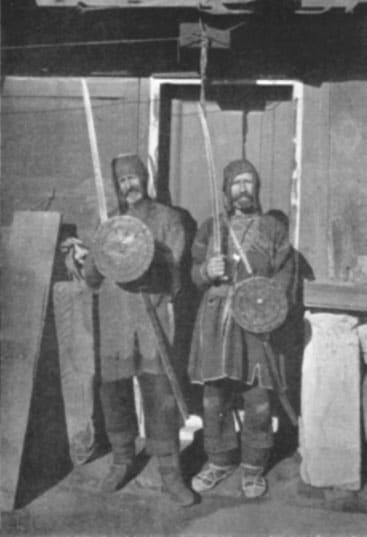
There were rare occasions, and eyewitness accounts from other Georgian conscripts, that at least some Khevsurs brought a bit of their identity to the field. The chance to wear a cross-stamped cloak over a uniform was not entirely out of the question, and even a more regulated set of clothes could have a chokha or two tucked inside. Few kept it that way for long, but even a simple woven belt, carved gorjami, or embroidered patch could be a way to stay, at least a little, who one truly was under the khaki. These survivals of Georgian culture in such a uniform world were, in a way, a quiet rebellion and an act of defiance.
Warfare during WWI, in its traditional form, was essentially nonexistent by that time. The chance to connect to that old world and fight as their ancestors had for hundreds of years came in close combat. Bayonet charges, trench raids, and other, thankfully rare and always brutal, instances of hand-to-hand combat were where a Khevsur could fight, for a few short moments, with the same level of intent and visceral rage that would once decide the outcome of an inter-clan feud. But even this was an exception, and a modern war was in no way designed for individual heroism.
Many returned home changed—not just by wounds or loss, but by the erosion of the old warrior ideal. Still, their experience in World War I did not extinguish their identity. If anything, it reinforced their distinctiveness. The clash between tradition and mechanization did not erase the spirit of these Caucaus natives; it tested it. And for those who survived, it marked the beginning of a new chapter in a centuries-old story.
Death, Memory, and Legacy
The warriors who returned from the war found themselves in a very different homeland. The Russian Empire had been defeated in the First World War, and Georgia was briefly independent before being occupied by the Soviet Union in 1921. The new regime was not friendly to the fiercely independent mountain tribes. While some Khevsurs tried to return to their traditional lives, many were targeted for collectivization and repression. The Khevsurs were known as both Imperial soldiers and defenders of a pre-Soviet order, making them dangerous enemies in the eyes of the Bolsheviks.
Ironically, the Soviet state both repressed and romanticized its culture. On the one hand, they were disarmed, their family lineages destroyed, and their oral history censored as “reactionary.” On the other hand, Soviet filmmakers and ethnographers contributed to the mythologizing of the Khevsur as brave and loyal highlanders. One series of photos from the 1930s even staged a group of Khevsur warriors in battle armor as part of propaganda-driven folklore. Meanwhile, the true story of cultural loss was buried beneath manufactured heroism.
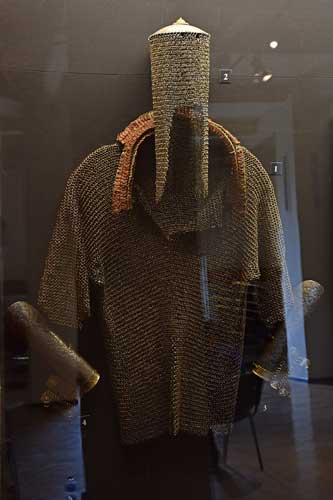
For many decades the story of the Khevsur fighters was preserved in the mountain villages and family histories. But when the Soviet Union collapsed in 1991, there was a newfound appreciation of Georgia’s pre-Soviet past. Suddenly, they were not just an ethnographic curiosity; they were a powerful symbol. Georgian scholars and artists set to work studying their traditions, recording their folk songs, and reviving ceremonial dress that had been nearly lost. Their story took on new meaning as Georgians sought to rebuild after a half-century of Soviet rule.
Today the Khevsur identity is central to a modern Georgia rediscovering its past. It is a symbol of survival, not just of military heroism but of preserving Georgian culture through war and occupation and neglect. Memorials and reenactments keep their story alive, especially in the capital Tbilisi and the mountainous Khevsureti region. For many Georgians, the Khevsurs are living proof that national identity can survive even the darkest chapters of history.
The Khevsur warrior legacy has become part of the bridge between myth and memory for Georgians. It unites the story of a medieval culture and the story of forgotten soldiers in a fallen empire to tell the new tale of modern Georgia. In a country still struggling with the legacy of its past and the uncertainty of its future, the Khevsurs serve as a reminder that there is a source of strength in holding on to one’s roots.
Enduring Spirit in a Changing World
In that respect, their story is unique. It’s a story of how an ancient martial tradition managed to survive into the modern age, when its anachronism was still not merely symbolic but tangible, physical, and a matter of life and death. Against rifles, trenches, and barbed wire, they brought chain mail and codes of honor forged by centuries of mountain living. On the battlefields of World War I, it was not only the clash of arms that took place, but also the ultimate confrontation between past and present, and a testament to just how long tradition can hold out against the modern world.
In another sense, their story is also a lesson about identity and perseverance. The Khevsurs didn’t just disappear when times changed; they adapted without forgetting where they came from. Their empires and kingdoms fell, and the governments that came after tried to deny or erase their history. But the name Khevsur still has power. It means courage and dignity and pride too deep to be smothered.
